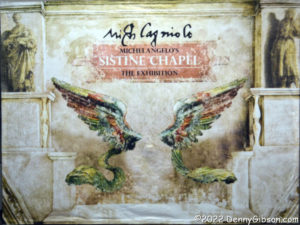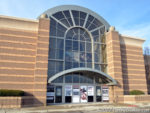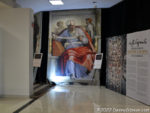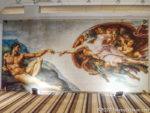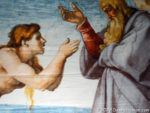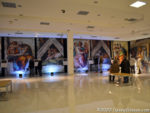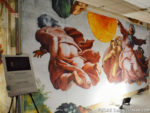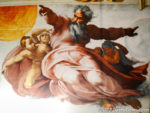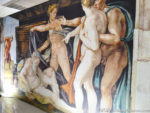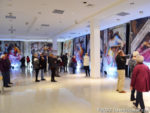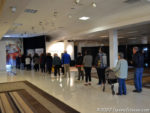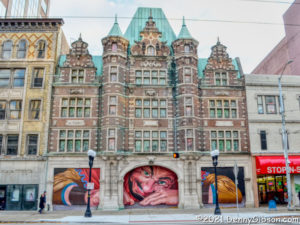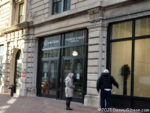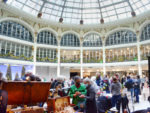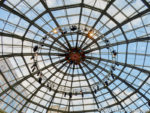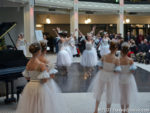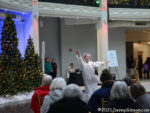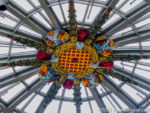 On Friday, my friend Terry and I visited America’s Packard Museum in Dayton, Ohio. This seems to be a once-a-decade thing for me, with my first visit coming in September 2000 and the second in March 2011. Even though this was my third visit and Terry’s first, we both saw — or at least noticed — some new things. For me, those things embarrassingly included this Adonis, a.k.a, Sliding Boy, hood ornament.
On Friday, my friend Terry and I visited America’s Packard Museum in Dayton, Ohio. This seems to be a once-a-decade thing for me, with my first visit coming in September 2000 and the second in March 2011. Even though this was my third visit and Terry’s first, we both saw — or at least noticed — some new things. For me, those things embarrassingly included this Adonis, a.k.a, Sliding Boy, hood ornament.
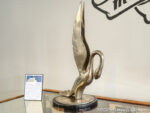
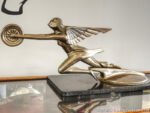
 I was familiar with the Goddes of Speed and Cormorant ornaments described here. But, despite having seen plenty of Packards, both in and out of museums, the existence of the Adonis ornament had never registered with me. The ornament in the opening photo is on a 1930 Boat-Tail Speedster and is the one that finally caught my attention. Any thoughts that this was my first time being exposed to an Adonis ornament are completely done in by this detail from a photo of that same car taken in 2011.
I was familiar with the Goddes of Speed and Cormorant ornaments described here. But, despite having seen plenty of Packards, both in and out of museums, the existence of the Adonis ornament had never registered with me. The ornament in the opening photo is on a 1930 Boat-Tail Speedster and is the one that finally caught my attention. Any thoughts that this was my first time being exposed to an Adonis ornament are completely done in by this detail from a photo of that same car taken in 2011.
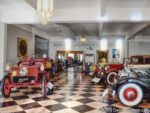 By coincidence, we were there on a day when Lola Signom, widow of museum founder and namesake Robert Signom, was volunteering. It was Lola who explained to me that a choice of three different hood ornaments was once available to Packard buyers. The Sliding Boy seems to have been the least popular of the three. Another friendly museum staff member also answered multiple questions and supplied lots of information. Although I read his name tag with the best of intentions, my memory has again failed me, so I have to thank him namelessly.
By coincidence, we were there on a day when Lola Signom, widow of museum founder and namesake Robert Signom, was volunteering. It was Lola who explained to me that a choice of three different hood ornaments was once available to Packard buyers. The Sliding Boy seems to have been the least popular of the three. Another friendly museum staff member also answered multiple questions and supplied lots of information. Although I read his name tag with the best of intentions, my memory has again failed me, so I have to thank him namelessly.
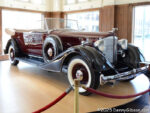
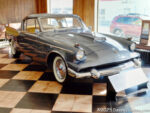
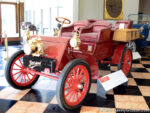 And now for some cars. Straight ahead of the entrance is a 1902 Model F, which I believe is the oldest car in the museum. Just to the right of the entrance is the museum’s newest car, a 1958 Packard Hawk. Packard merged with Studebaker in 1954, and the products essentially became Packards in name only. The prominent front corner spot is occupied by a 1934 Super 8 7-passenger Touring car that has carried General Eisenhower, Admiral Nimitz, and other big names.
And now for some cars. Straight ahead of the entrance is a 1902 Model F, which I believe is the oldest car in the museum. Just to the right of the entrance is the museum’s newest car, a 1958 Packard Hawk. Packard merged with Studebaker in 1954, and the products essentially became Packards in name only. The prominent front corner spot is occupied by a 1934 Super 8 7-passenger Touring car that has carried General Eisenhower, Admiral Nimitz, and other big names.
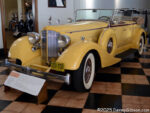
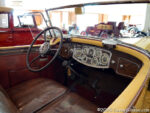 Many things about this 1934 Super Eight Sport Phaeton impressed me, but I think the two biggest are that it has not been restored and that it was purchased new for a 16-year-old girl who might have been a little bit spoiled. Read its placard here.
Many things about this 1934 Super Eight Sport Phaeton impressed me, but I think the two biggest are that it has not been restored and that it was purchased new for a 16-year-old girl who might have been a little bit spoiled. Read its placard here.
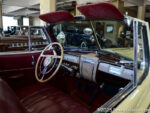
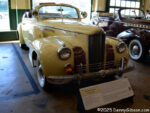 Although this 1941 One Twenty convertible is only seven years newer than the convertible in the last paragraph, it has a column shift which our poor little rich girl may have found easier to drive. Of course, she still might have disliked the color.
Although this 1941 One Twenty convertible is only seven years newer than the convertible in the last paragraph, it has a column shift which our poor little rich girl may have found easier to drive. Of course, she still might have disliked the color.
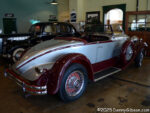
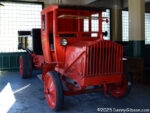
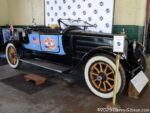 Here is that Boat-Tail Speedster whose hood ornament appears in the opening photo. Packard built trucks between 1908 and 1923 and they were used quite a bit by the Army in WW I. The top speed of this 1919 Model E Five Ton Truck is 11 MPH which is no doubt more than enough for a driver depending on those solid rubber tires for cushioning. The 1918 Twin Six Runabout competed in the 2002 Great Race and is now available as a photo prop at the museum.
Here is that Boat-Tail Speedster whose hood ornament appears in the opening photo. Packard built trucks between 1908 and 1923 and they were used quite a bit by the Army in WW I. The top speed of this 1919 Model E Five Ton Truck is 11 MPH which is no doubt more than enough for a driver depending on those solid rubber tires for cushioning. The 1918 Twin Six Runabout competed in the 2002 Great Race and is now available as a photo prop at the museum.
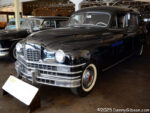
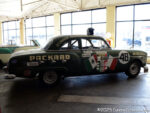
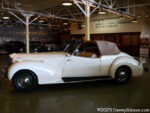 There is now an enclosed walkway to the museum’s annex. Signs say that post-war cars are featured there, though some might see a problem with the first car pictured. It sure looks like the “Dutch” Darrin-designed cars that people like Clark Gable and Errol Flynn liked to be seen driving in the late 1930s and early 1940s. It is exactly like those because it was built by “Dutch” Darrin using existing castings and molds in 1971. There is no question about the other two pictured cars being post-war. The 1951 200 Club Sedan placed fifth overall in the 1951 Carrera Panamericana with the help of a young mechanic named Pablo Merrigan. In 1995, Merrigan completely restored the car and began racing it himself. The last car pictured is the one that took Don Corleone to the cemetery in The Godfather. It’s a 1948 Henney Landau 3-Way Hearse. The 3-way designation comes from the rear-hinged side doors allowing coffins to be loaded from either side or the rear.
There is now an enclosed walkway to the museum’s annex. Signs say that post-war cars are featured there, though some might see a problem with the first car pictured. It sure looks like the “Dutch” Darrin-designed cars that people like Clark Gable and Errol Flynn liked to be seen driving in the late 1930s and early 1940s. It is exactly like those because it was built by “Dutch” Darrin using existing castings and molds in 1971. There is no question about the other two pictured cars being post-war. The 1951 200 Club Sedan placed fifth overall in the 1951 Carrera Panamericana with the help of a young mechanic named Pablo Merrigan. In 1995, Merrigan completely restored the car and began racing it himself. The last car pictured is the one that took Don Corleone to the cemetery in The Godfather. It’s a 1948 Henney Landau 3-Way Hearse. The 3-way designation comes from the rear-hinged side doors allowing coffins to be loaded from either side or the rear.
 Packard began building cars in Warren, Ohio, in 1899 but moved to Detroit, Michigan, in 1902, where it remained until the merger with Studebaker in 1954. Plans to restore various parts of the immense complex never came to fruition. According to Wikipedia, “By late December 2024, all structural components of the plant had been razed, except for two adjacent sections along E. Grand Boulevard which are slated for preservation.” This is the lintel from the west entrance to the Packard office building on East Grand Boulevard in Detroit.
Packard began building cars in Warren, Ohio, in 1899 but moved to Detroit, Michigan, in 1902, where it remained until the merger with Studebaker in 1954. Plans to restore various parts of the immense complex never came to fruition. According to Wikipedia, “By late December 2024, all structural components of the plant had been razed, except for two adjacent sections along E. Grand Boulevard which are slated for preservation.” This is the lintel from the west entrance to the Packard office building on East Grand Boulevard in Detroit.
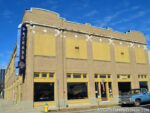 There is a Packard museum in Warren, and I’ve visited it three times (2011, 2012, 2023) between Friday and my most recent visit to the Dayton museum. The National Packard Museum in Warren and America’s Packard Museum in Dayton are both great museums, and both are worth visiting. I do naturally feel some regional pride in the Dayton museum, and I like that it is housed in a building constructed as a Packard distributorship, which served that purpose for many years and now has its original neon sign hanging outside. Visiting either is good. Both is better.
There is a Packard museum in Warren, and I’ve visited it three times (2011, 2012, 2023) between Friday and my most recent visit to the Dayton museum. The National Packard Museum in Warren and America’s Packard Museum in Dayton are both great museums, and both are worth visiting. I do naturally feel some regional pride in the Dayton museum, and I like that it is housed in a building constructed as a Packard distributorship, which served that purpose for many years and now has its original neon sign hanging outside. Visiting either is good. Both is better.

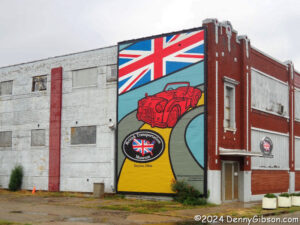
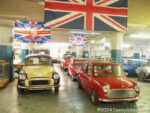

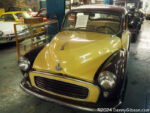
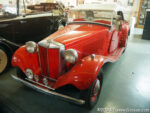
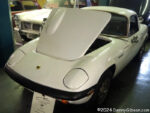
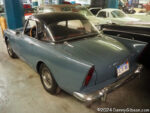
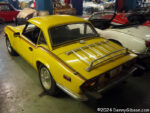
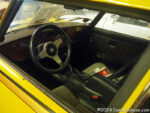
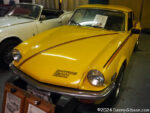
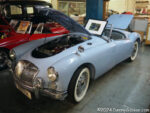
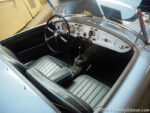
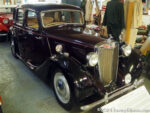
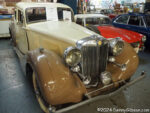
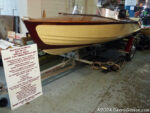



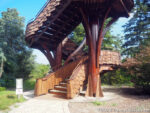

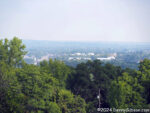
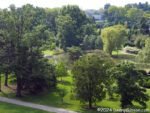



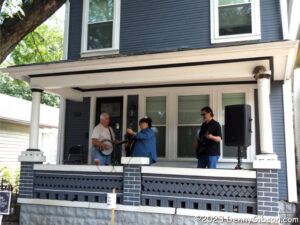
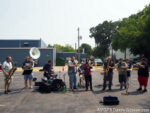
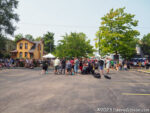
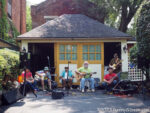
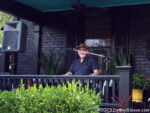
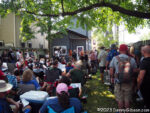
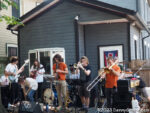
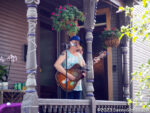

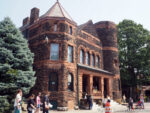
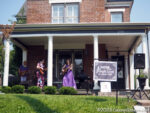


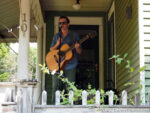
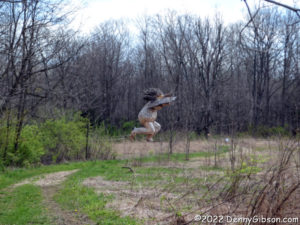
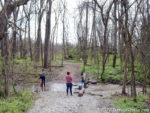

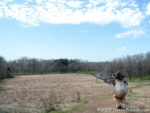
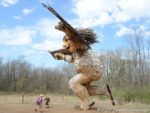

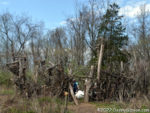




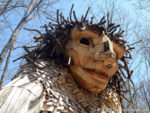

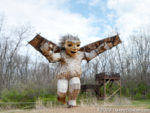

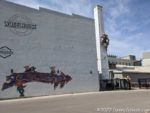


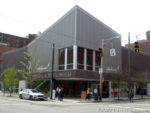

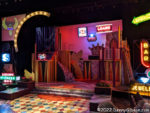

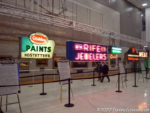


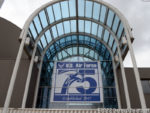
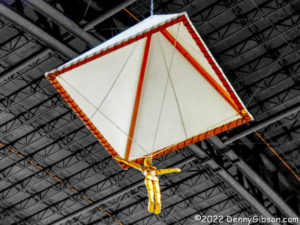
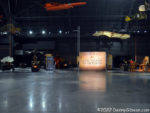
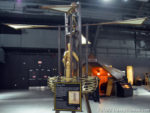
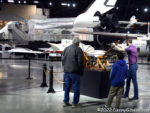
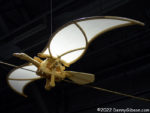
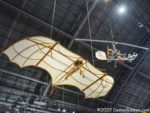
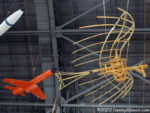
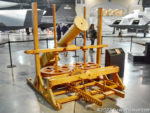
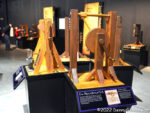
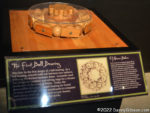
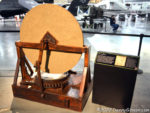

 Nearly four months ago, when one February day seemed as good as any other, I purchased a ticket to see Hamilton at the Schuster Center in Dayton, Ohio. On Thursday, as various alerts and other weather-related stories popped up, I thought the show might be canceled and took a look at the theater website where I found this banner displayed. The small print says, “All performances will go on as scheduled unless there is a Level 3 Snow Emergency in Montgomery County, Ohio.” Since purchasing the ticket, I had received a few emails with advice on parking and restaurants and some other details about attending the performance including one that arrived at noon on Thursday. Read about Ohio’s three levels of snow emergencies
Nearly four months ago, when one February day seemed as good as any other, I purchased a ticket to see Hamilton at the Schuster Center in Dayton, Ohio. On Thursday, as various alerts and other weather-related stories popped up, I thought the show might be canceled and took a look at the theater website where I found this banner displayed. The small print says, “All performances will go on as scheduled unless there is a Level 3 Snow Emergency in Montgomery County, Ohio.” Since purchasing the ticket, I had received a few emails with advice on parking and restaurants and some other details about attending the performance including one that arrived at noon on Thursday. Read about Ohio’s three levels of snow emergencies 

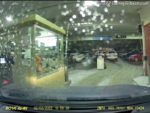

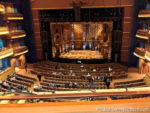

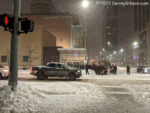


 Although I didn’t actually see it until Friday morning, this message was emailed about a quarter to 6:00 on Thursday. A similar message was posted to Facebook and the website, presumedly about the same time.
Although I didn’t actually see it until Friday morning, this message was emailed about a quarter to 6:00 on Thursday. A similar message was posted to Facebook and the website, presumedly about the same time.